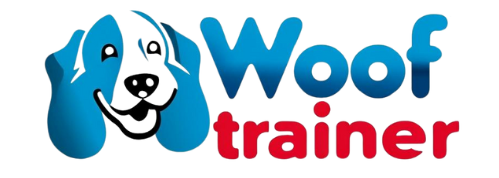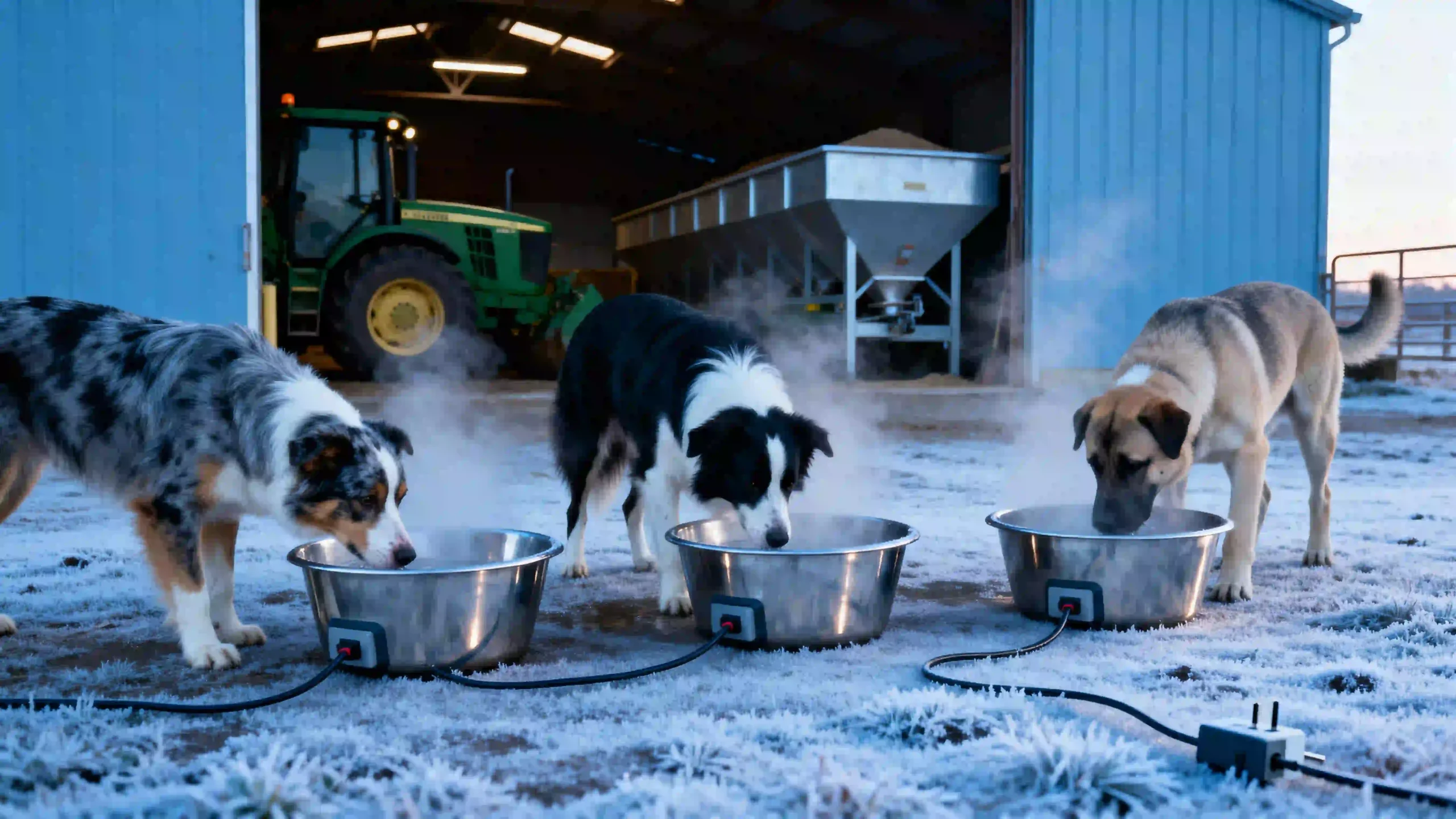For farmers and ranchers managing large properties with working dogs (sheepdogs, cattle dogs, guard dogs), investing in a cost-effective heated dog bowl is more than comfort—it’s economic sense. Outdoor hydration is a non-negotiable necessity, especially in winter. When paired with durable pet gear and proper energy usage, a heated bowl system can reduce labor, prevent health issues, and save money long term. This article examines how heated dog bowl solutions repay their cost, especially on large rural operations.
How energy savings play into heated bowl economics
One of the biggest deterrents to buying powered heated bowls is the assumption of high electricity cost. In practice, many heated water bowls are thermostatically controlled so that heating elements run only when necessary. For example, models such as the K&H Thermal-Bowl use 12–25 watts, depending on size. When water is above freezing, the heater shuts off, so energy consumption drops dramatically.
Another product, a heated plastic pet bowl with 1.5-gallon capacity from Farm Innovators, uses 60 watts when active, but again employs automatic control so it’s not running continuously. For a large property, selecting bowls with lower wattage but good insulation, or placing them in sheltered spots, significantly reduces energy draw over time.
The WoofTrainer Heated Dog Bowl takes a balanced approach between power and efficiency. Drawing 50 watts, it maintains water between 0°C and 20°C even in −20°C conditions, while its low-voltage 24V design eliminates the safety risks of high-voltage models. Over a 90-day winter, running an average of 8 hours/day, consumption equals 36 kWh, or about $4.32 at $0.12/kWh—less than many 60W competitors. Built from food-grade stainless steel with a chew-resistant cord and anti-tip base, it reduces replacement costs and labor over time. For large properties, this combination of durability, safety, and moderate energy use makes the WoofTrainer a cost-effective long-term investment.
Here’s a calculation: suppose you run a 60W bowl for 8 hours/day (times when it dips below freezing) across 90 winter days. Energy used = 60W × 8h × 90 = 43,200 Wh = 43.2 kWh. If your electricity rate is $0.12/kWh, that’s about $5.18 for the winter for one bowl. Compare that to the cost of replacing multiple non‐durable bowls, veterinary bills for dehydration, or labor to break ice multiple times daily. The return on investment begins to look solid once you scale to multiple dogs or remote pens.
That math lines up with what real farm dog owners are seeing in practice. As WoofTrainer explains, the actual energy draw of a heated bowl isn’t dramatic, and the peace of mind it brings—knowing that dogs always have unfrozen water—more than justifies the small electricity cost.
Farm water efficiency & reducing labor
Durability and efficient use of water/hydration equipment also impact cost savings:
- When outdoor bowls freeze or crack, water is wasted (leaks, drainage, overflow when thawing). Durable bowls prevent breaking and thus reduce replacement costs. Products like the Farm Innovators “Signature Series” heated pet bowls are designed with stainless steel (or heavy-duty plastic with anti-chew cords) and thermostat control to avoid over‐heating or overheating.
- Labor savings are often overlooked. On large properties, walking to check and break ice in multiple watering stations consumes hours per day in deep winter. A heated bowl that keeps water thawed reduces those round-trips. This ties in with themes from How Heated Dog Bowls Help Reduce Chores on the Ranch, where reducing daily maintenance is a direct saving.
- Energy efficiency pairs with water efficiency: insulated bowls lose less heat, meaning less energy required to maintain non-frozen water. Also, fewer fill-ups are required if water doesn’t freeze overnight and evaporate or spill.
Durability and long-term cost considerations
Durable pet gear may cost more initially, but its lifespan often outperforms cheaper alternatives, yielding savings:
- Chew-resistant cords, anti-tip bases, stainless steel or other rugged materials resist damage from livestock, frost, snow, and debris.
- Warranty coverage matters: many higher-quality heated bowls offer a year or more, reducing repair or replacement cost. For example: K&H’s Thermal-Bowl models include a one-year limited warranty and use MET listing for electrical safety.
- Size and capacity: larger bowls (1.5 gallons or more) allow fewer units to serve multiple dogs or dogs + livestock. Fewer units mean less electrical infrastructure and fewer maintenance points. If you invest in a few good large bowls rather than many smaller low‐quality ones, you save both on replacement cost and on aggregated energy draw (if the larger ones are efficient).
Comparing Solar vs Electric options
Electric heated bowls are reliable but incur ongoing electricity costs. Solar-powered setups may have higher upfront costs (panels, batteries), but when properly designed they can dramatically reduce energy costs over the long run.
A comparison of the two is well covered by Solar vs Electric Heated Dog Bowls: Which Works Best for Farms. Key takeaways:
- In areas with significant winter sun, solar plus battery systems can preheat or maintain water overnight, reducing grid electricity usage.
- For remote pens without easy access to power, solar systems eliminate the cost (and labor) of running long extension cords or maintaining generator power.
- Electric systems generally perform more consistently in very cold weather, so combining electric base units with solar backups or insulation is often the most cost-effective hybrid.
Best practices to maximize savings
To ensure the heated dog bowl you choose becomes cost-effective, farmers & ranchers should:
- Select models with thermostat or built‐in control so that heating only kicks in when needed — this is major for energy savings.
- Place bowls in sheltered, protected locations (barns, windbreaks) to reduce heat loss and extend the time between heater cycles.
- Choose durable materials, not just for the bowl but for cords and safety features; fewer replacements over time equate to savings.
- Use large capacity bowls where practical, reducing number of units, consolidating water lines and power sources.
- Perform regular maintenance, cleanings, check cords and connectors — failures often drive hidden costs (dog health, replacement gear, downtime).
Value over time: Case example
Consider a ranch with 5 guard dogs, each currently using a basic, non-heated bowl which needs checking twice daily, ice breaking, with frequent replacements because plastics crack, cords get chewed, etc. Suppose the cost of those failures & labor is $200 per dog per winter (labor + replacement + minor health costs). That’s $1,000 per winter.
If that ranch switches to high-quality cost-effective heated dog bowls (say 5 bowls of good quality, each costing $60-120 up front, efficient wattage, built tough), the combined upfront cost might be $500-$800. Electrical cost might be under $30-50 for the winter for all units (depending on rates and usage). Repairs or replacements might drop sharply. Net savings: several hundred dollars in the first winter and increasing in subsequent years as replacements diminish.
Conclusion
For large properties, the cost savings of cost-effective heated dog bowl setups are both real and measurable.
By combining energy efficiency, reduced labor, prevention of health issues, and the long lifespan of durable pet gear, these solutions provide a clear return on investment. Products like the WoofTrainer Heated Bowl exemplify how rugged, low-voltage, high-performance designs can deliver reliable hydration even in extreme winter conditions, while keeping energy costs moderate.
When paired with smart site placement, adequate capacity, and equipment built for harsh outdoor use, heated bowls become a strategic asset—offering both financial and operational value rather than just comfort or convenience.
For further guidance on choosing the right system, see Heated Dog Bowls: The Complete Guide to Keeping Pets Hydrated in Winter.


